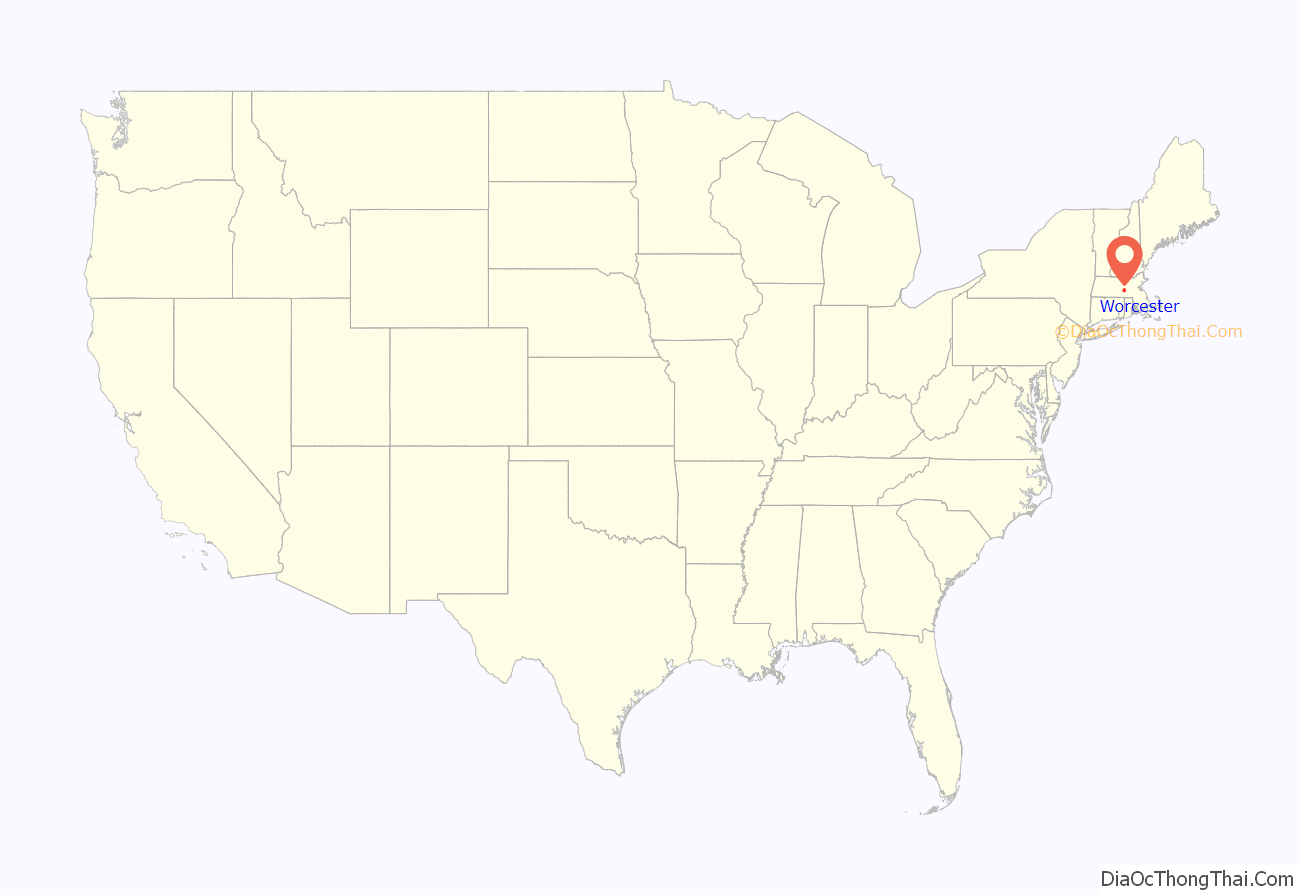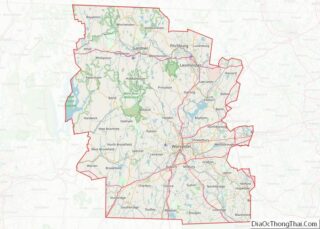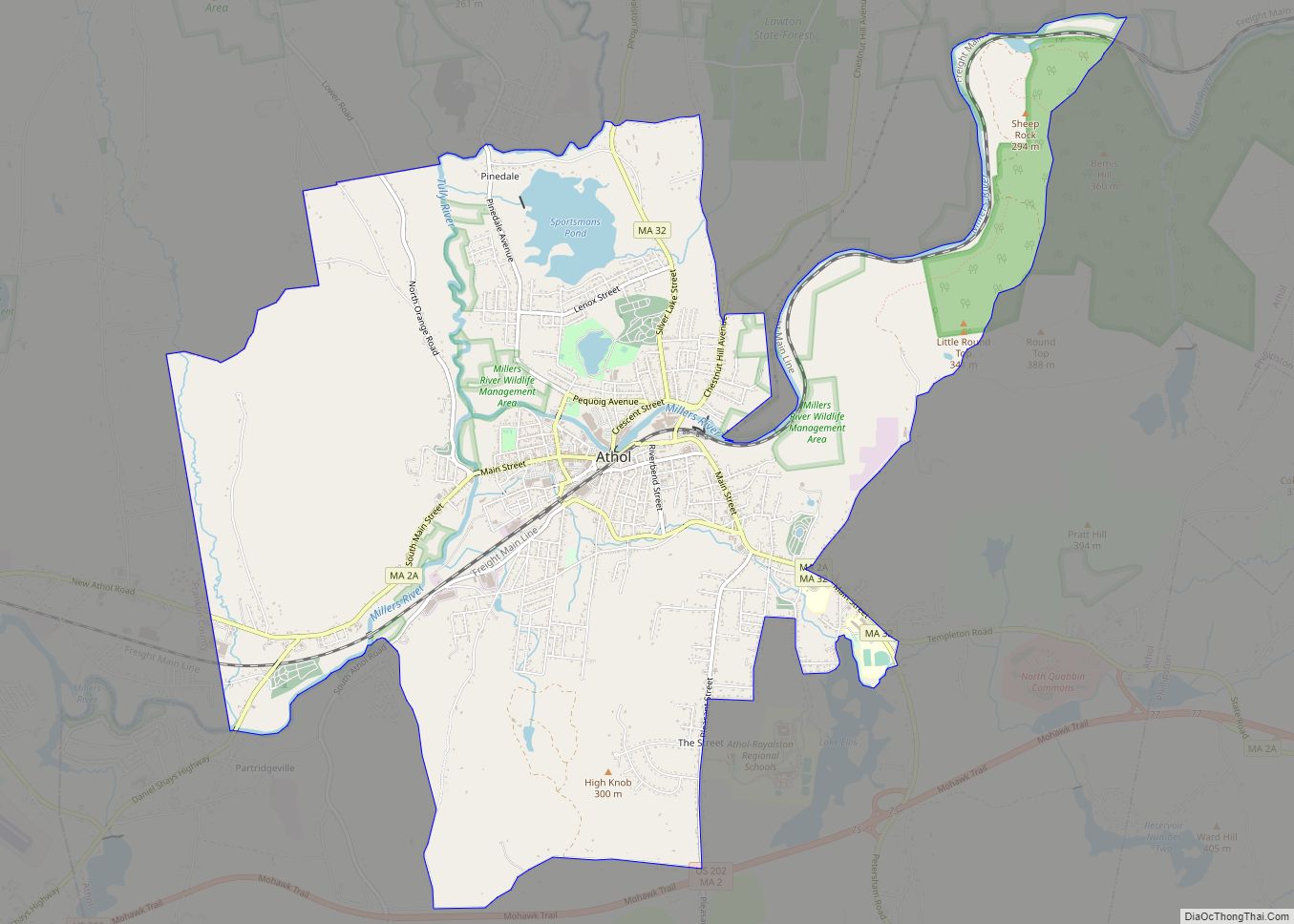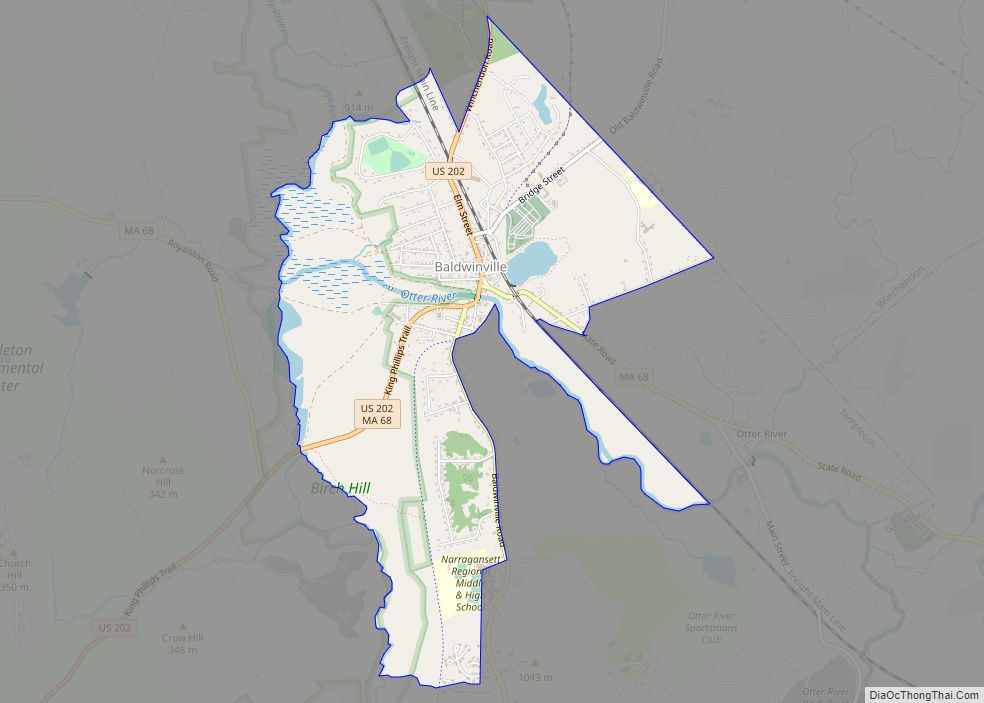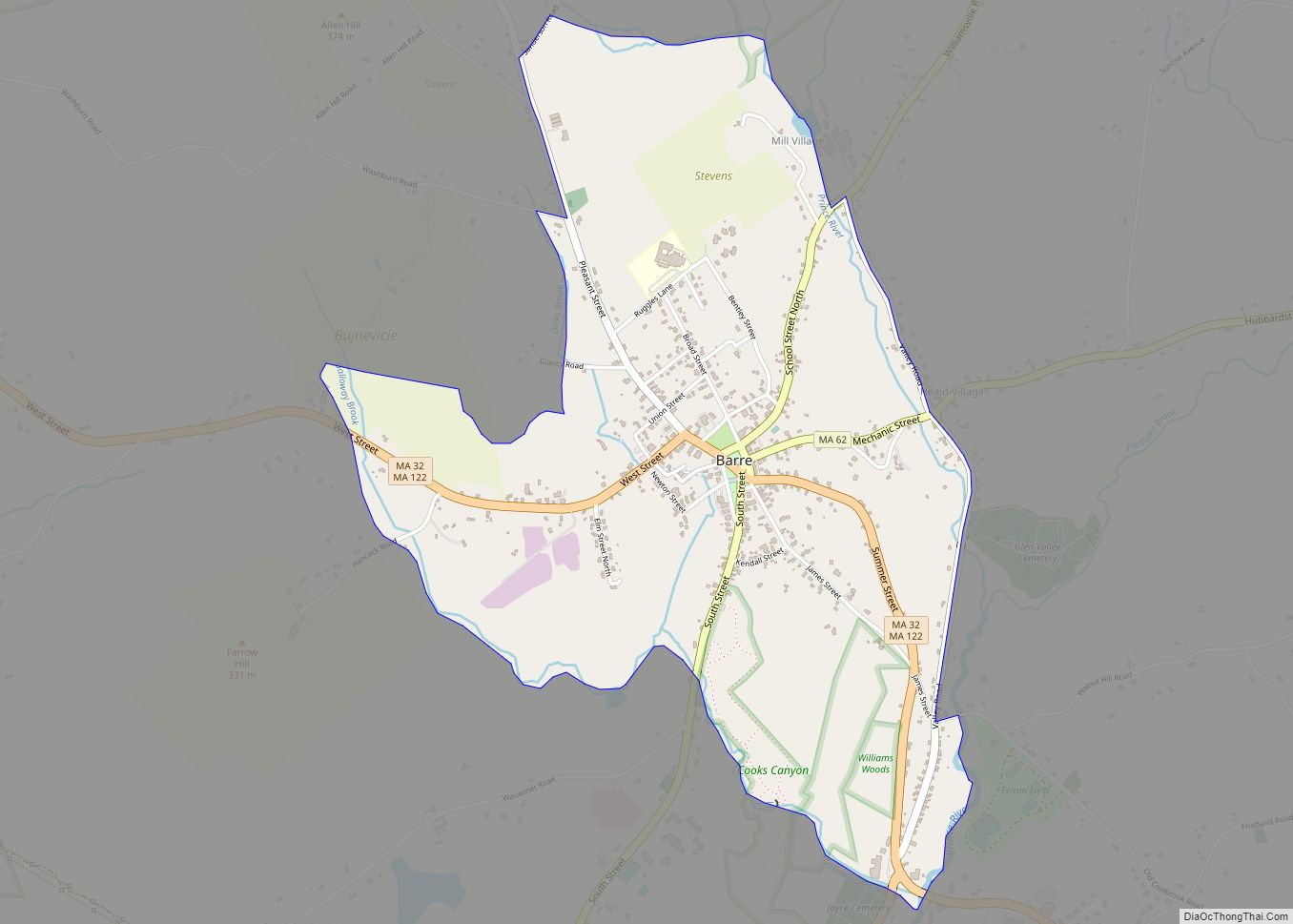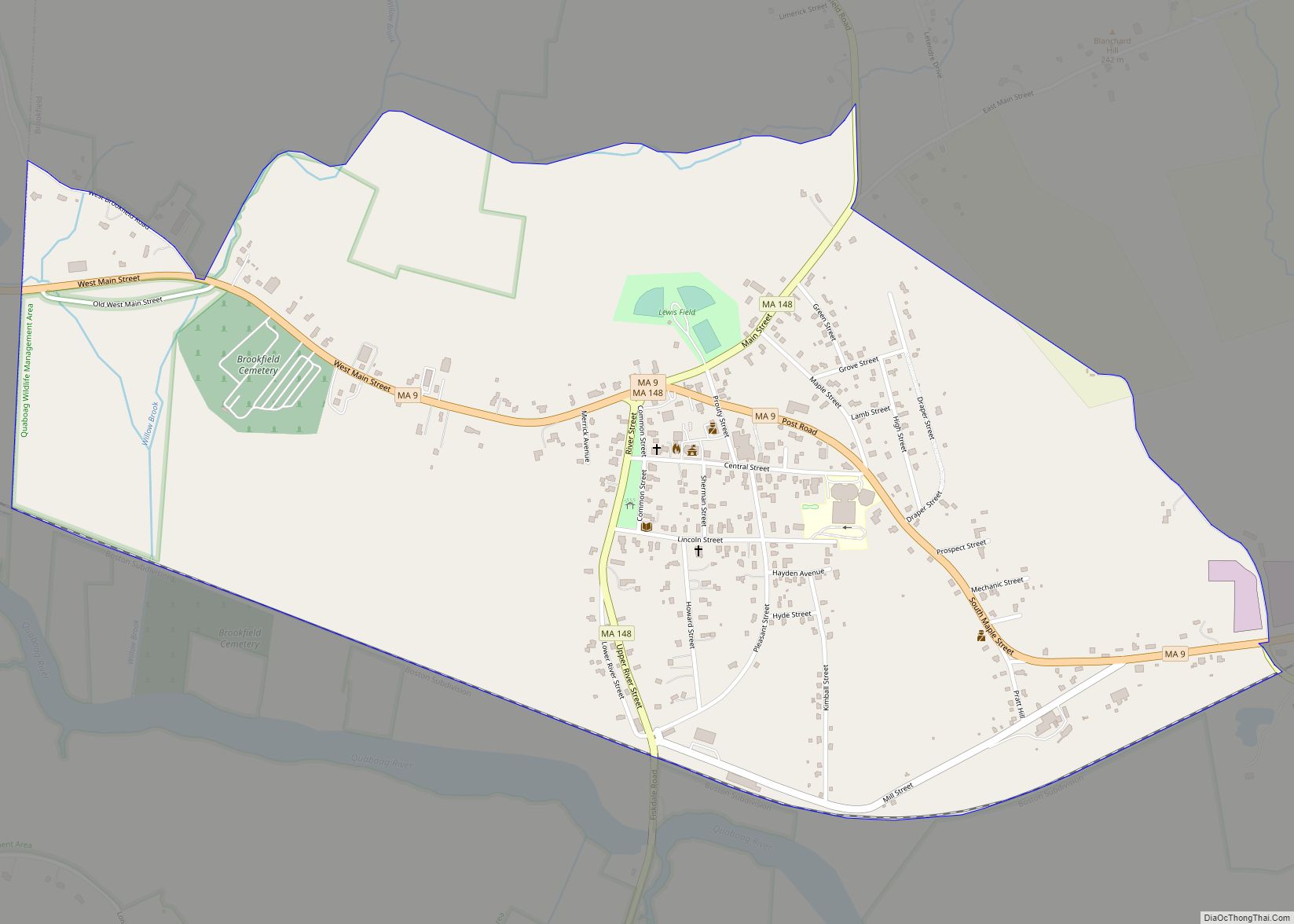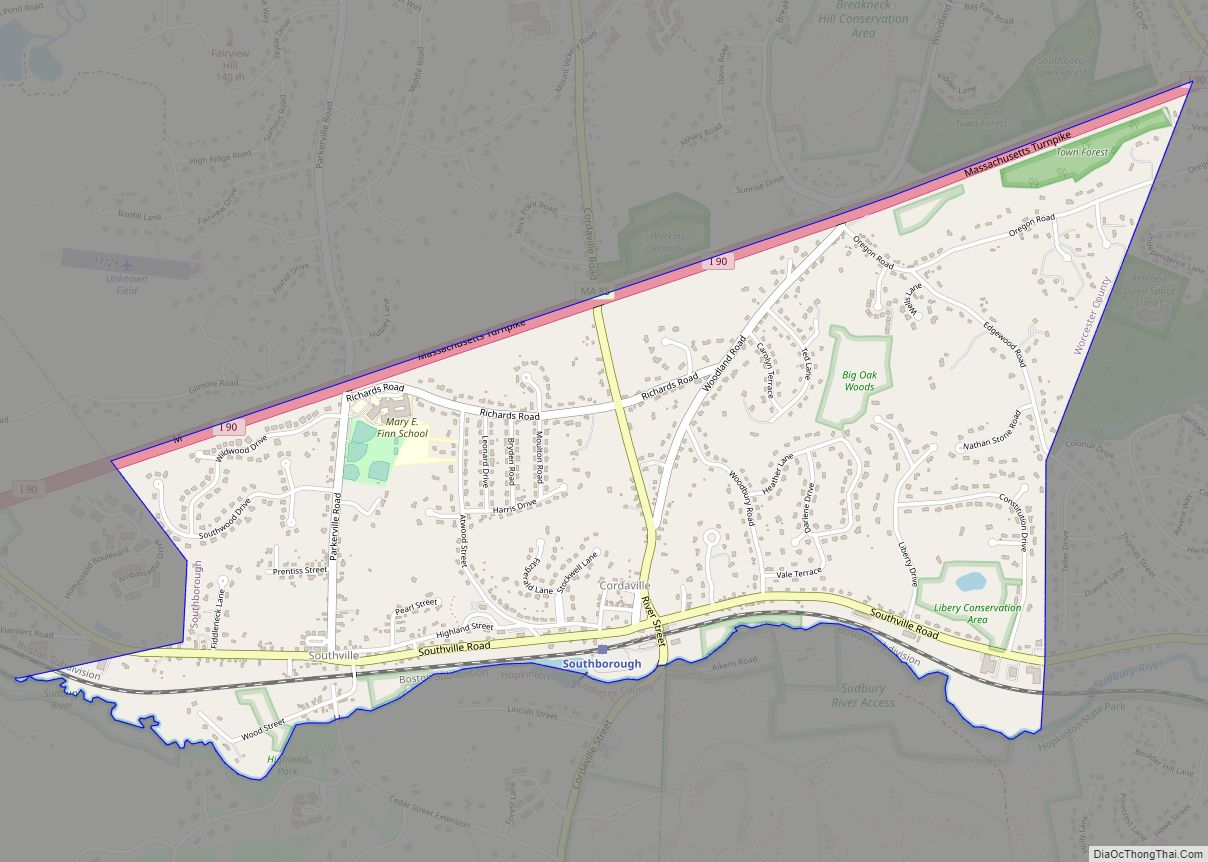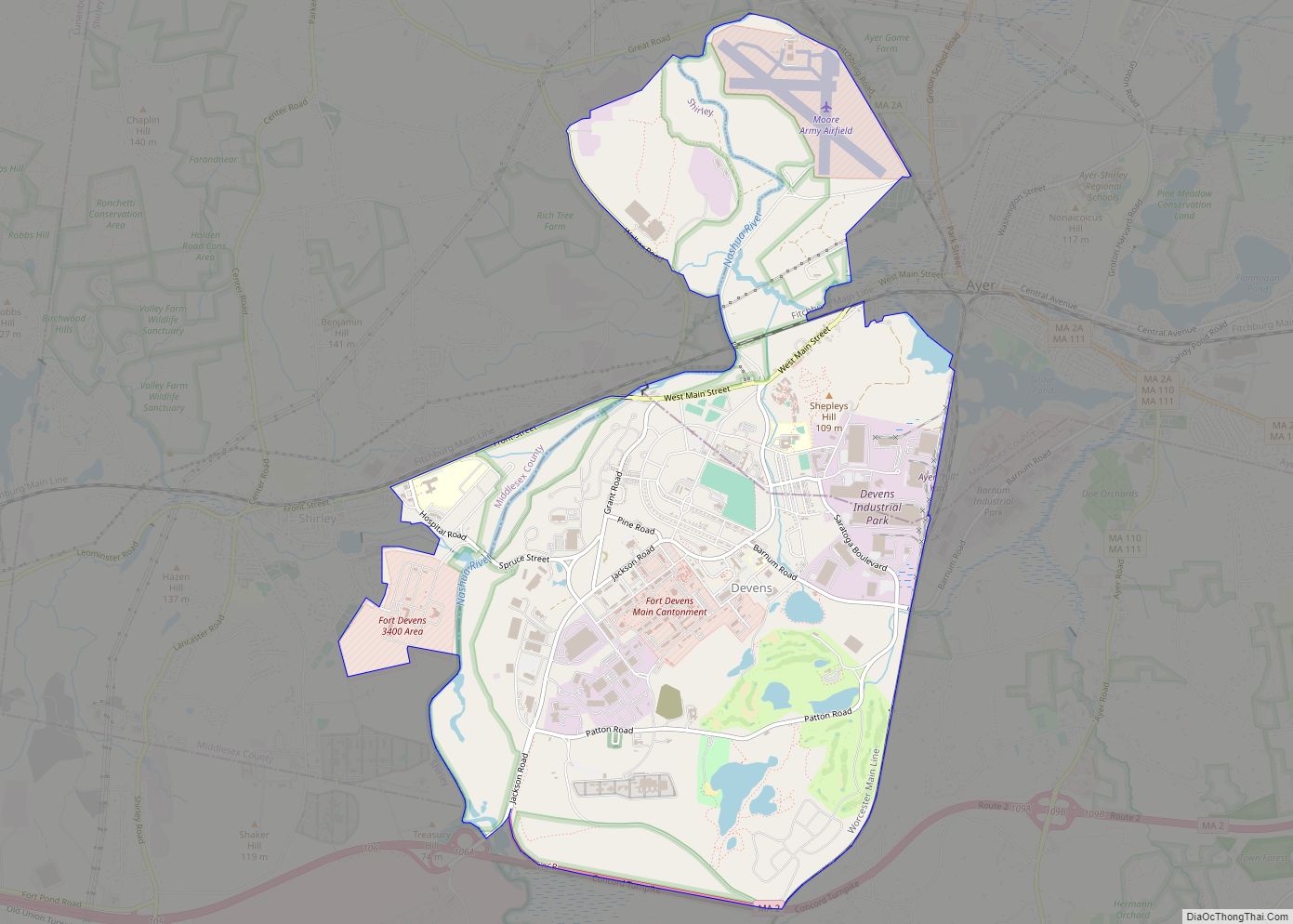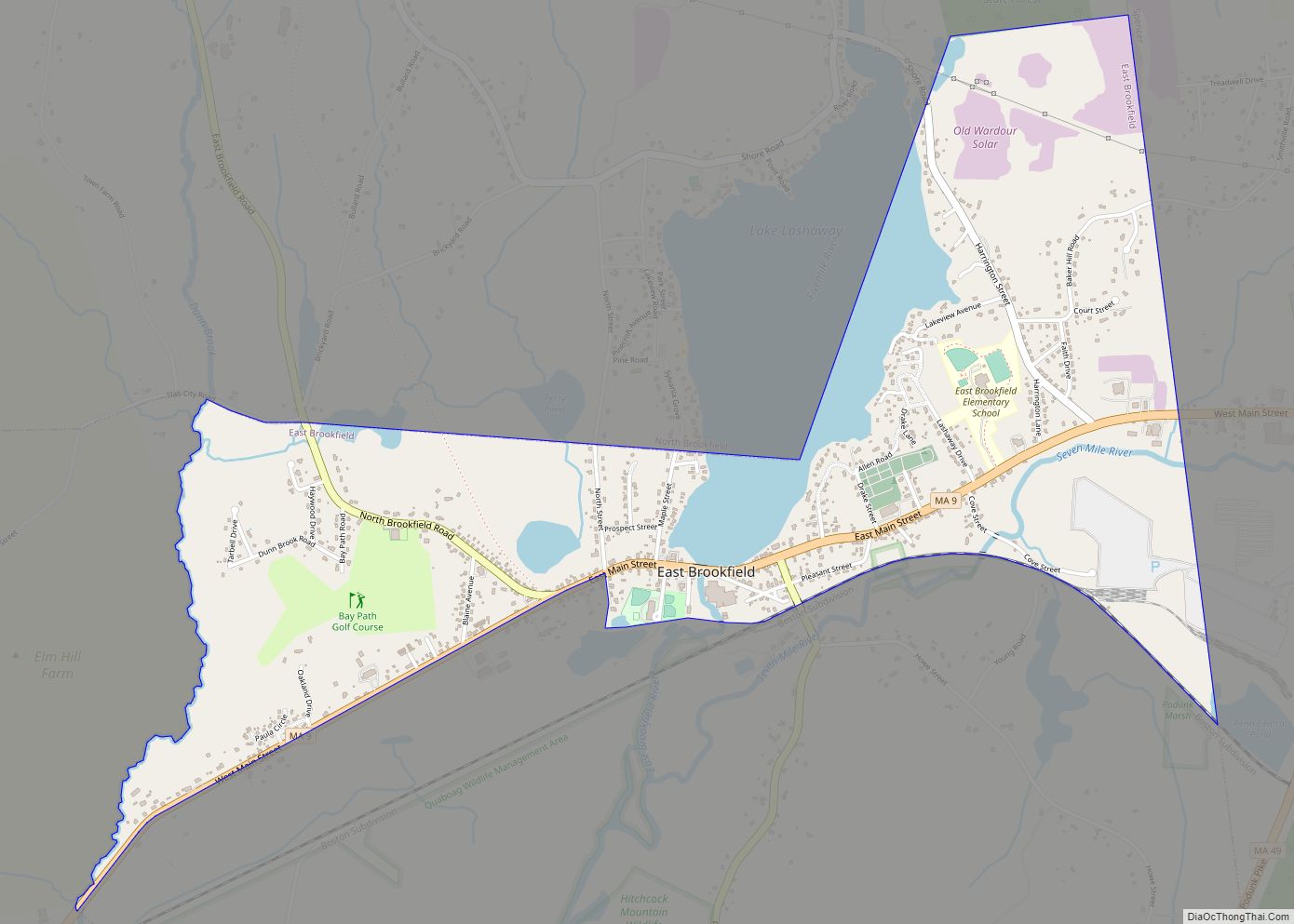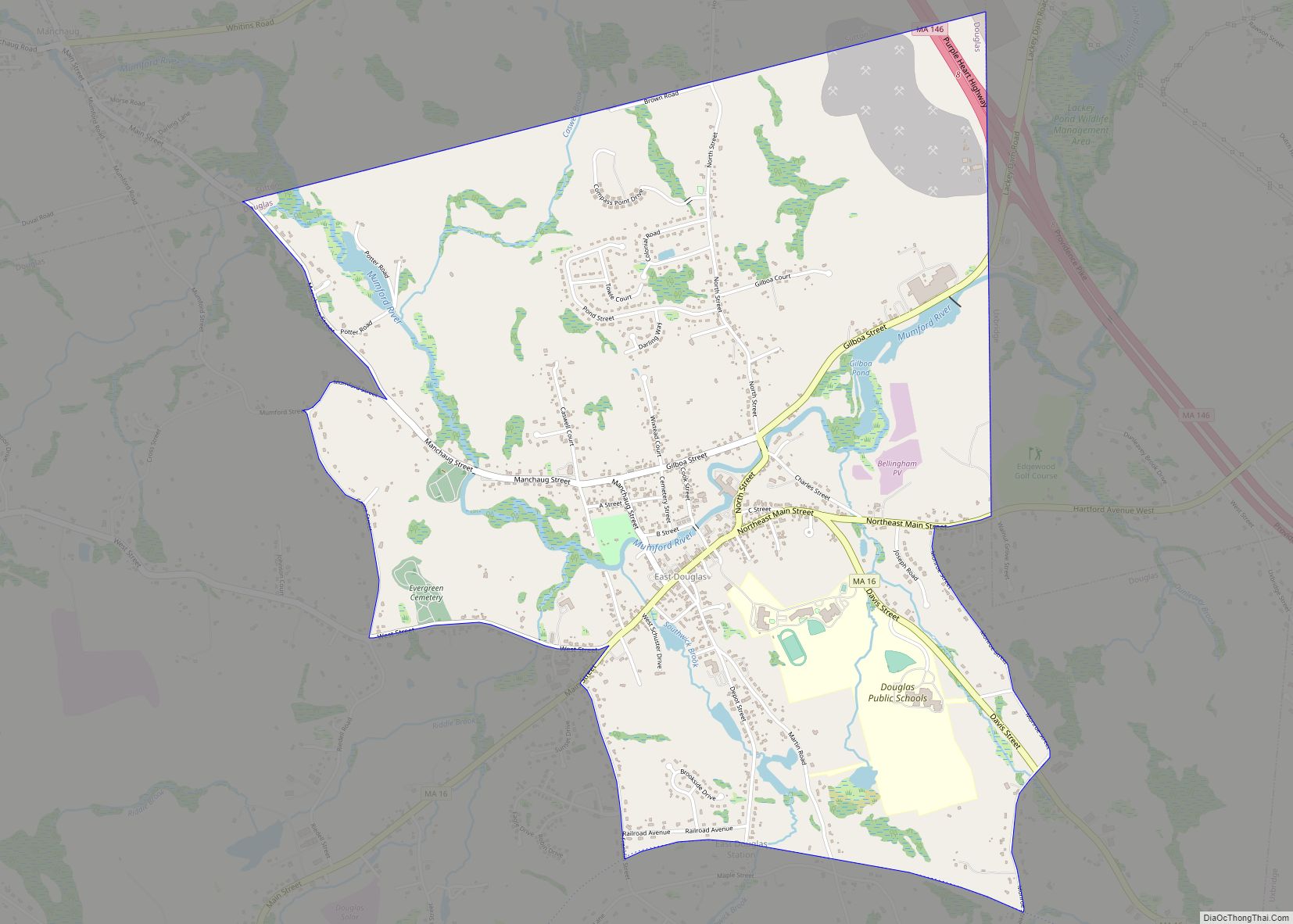Worcester (/ˈwʊstər/ (listen) WUUS-tər, locally [ˈwɪstə]) is the second largest city in the Commonwealth of Massachusetts and the 114th most-populous city in the United States. Named after Worcester, England, the city’s population was 206,518 at the 2020 census, also making it the second-most populous city in New England after Boston. Worcester is approximately 40 miles (64 km) west of Boston, 50 miles (80 km) east of Springfield and 40 miles (64 km) north-northwest of Providence. Due to its location near the geographic center of Massachusetts, Worcester is known as the “Heart of the Commonwealth”; a heart is the official symbol of the city. Worcester is the historical seat of Worcester County in central Massachusetts.
Worcester developed as an industrial city in the 19th century due to the Blackstone Canal and rail transport, producing machinery, textiles and wire. Large numbers of European immigrants made up the city’s growing population. However, the city’s manufacturing base waned following World War II. Long-term economic and population decline was not reversed until the 1990s, when higher education, medicine, biotechnology, and new immigrants started to make their mark. The city’s population has grown by 28% since 1980, reaching a new all-time high in the 2020 census and experiencing urban renewal.
Modern Worcester is known for its diversity and large immigrant population, with significant communities of Vietnamese, Brazilians, Albanians, Puerto Ricans, Ghanaians, Dominicans, and others. Twenty-two percent of Worcester’s population was born outside the United States. A center of higher education, it is home to eight separate colleges and universities, including the College of the Holy Cross, Worcester Polytechnic Institute (WPI), and Clark University. Architecturally, Worcester is notable for its large number of 19th century triple-decker houses, Victorian-era mill architecture, and lunch car diners such as Miss Worcester.
Worcester is the principal city of Central Massachusetts, and is a regional government, employment and transportation hub. Since the 1970s, and especially after the construction of Route 146 and interstates 90, 495, 190, 290, and 395, both Worcester and its surrounding towns have become increasingly integrated with Boston’s suburbs. The Worcester region now marks the western periphery of the Boston-Worcester-Providence (MA-RI-NH) U.S. Census Combined Statistical Area (CSA), or Greater Boston.
| Name: | Worcester city |
|---|---|
| LSAD Code: | 25 |
| LSAD Description: | city (suffix) |
| State: | Massachusetts |
| County: | Worcester County |
| Elevation: | 480 ft (146 m) |
| Land Area: | 37.36 sq mi (96.76 km²) |
| Water Area: | 1.08 sq mi (2.81 km²) |
| Population Density: | 5,527.78/sq mi (2,134.27/km²) |
| Area code: | 508 / 774 |
| FIPS code: | 2582000 |
| GNISfeature ID: | 0617867 |
| Website: | www.worcesterma.gov |
Online Interactive Map
Click on ![]() to view map in "full screen" mode.
to view map in "full screen" mode.
Worcester location map. Where is Worcester city?
History
Colonial era
The area was first inhabited by members of the Nipmuc tribe. The native people called the region Quinsigamond and built a settlement on Pakachoag Hill in Auburn.
In 1673, English settlers John Eliot and Daniel Gookin led an expedition to Quinsigamond to establish a new Christian Indian “praying town” and identify a new location for an English settlement. On July 13, 1674, Gookin obtained a deed to eight square miles of land in Quinsigamond from the Nipmuc people and English traders and settlers began to inhabit the region.
In 1675, King Philip’s War broke out throughout New England with the Nipmuc Indians coming to the aid of Indian leader King Philip. The English settlers completely abandoned the Quinsigamond area and the empty buildings were burned by the Indian forces. The town was again abandoned during Queen Anne’s War in 1702.
Finally, in 1713, Worcester was permanently resettled for a third and final time by Jonas Rice. Named after the city of Worcester, England, the town was incorporated on June 14, 1722.
On April 2, 1731, Worcester was chosen as the county seat of the newly founded Worcester County government. Between 1755 and 1758, future U.S. president John Adams worked as a schoolteacher and studied law in Worcester.
Growth and industry
In the 1770s, Worcester became a center of American revolutionary activity. British General Thomas Gage was given information of patriot ammunition stockpiled in Worcester in 1775. That same year, Massachusetts Spy publisher Isaiah Thomas moved his radical newspaper out of British occupied Boston to Worcester. Thomas would continuously publish his paper throughout the American Revolutionary War. On July 14, 1776, Thomas performed the first public reading in Massachusetts of the Declaration of Independence from the porch of the Old South Church, where the 19th-century Worcester City Hall stands today. He would later go on to form the American Antiquarian Society in Worcester in 1812.
During the turn of the 19th century Worcester’s economy moved into manufacturing. Factories producing textiles, shoes and clothing opened along the nearby Blackstone River.
However, the manufacturing industry in Worcester would not begin to thrive until the opening of the Blackstone Canal in 1828 and the opening of the Worcester and Boston Railroad in 1835. The city transformed into a transportation hub and the manufacturing industry flourished.
Worcester was officially chartered as a city on February 29, 1848. The city’s industries soon attracted immigrants of primarily Irish, Scottish, French, German, and Swedish descent in the mid-19th century and later many immigrants of Lithuanian, Polish, Italian, Greek, Turkish and Armenian descent. Immigrants moved into new three-decker houses (which originated in Worcester) lining hundreds of Worcester’s expanding streets and neighborhoods.
In 1831, Ichabod Washburn opened the Washburn & Moen Company. The company would become the largest wire manufacturing in the country and Washburn became one of the leading industrial and philanthropic figures in the city.
Worcester would become a center of machinery, wire products and power looms and boasted large manufacturers, including Washburn & Moen, Wyman-Gordon Company, American Steel & Wire, Morgan Construction and the Norton Company. In 1908, the Royal Worcester Corset Company was the largest employer of women in the United States.
Worcester would also claim many inventions and firsts. New England Candlepin bowling was invented in Worcester by Justin White in 1879. Esther Howland began the first line of Valentine’s Day cards from her Worcester home in 1847. Loring Coes invented the first monkey wrench and Russell Hawes created the first envelope folding machine. On June 12, 1880, Lee Richmond pitched the first perfect game in Major league baseball history for the Worcester Ruby Legs at the Worcester Agricultural Fairgrounds. The first three-decker homes were built by Francis Gallagher (1830–1911) in Worcester.
Urban changes and recovery
After World War II, Worcester began to fall into decline as the city lost its manufacturing base to cheaper alternatives across the country and overseas. Worcester felt the national trends of movement away from historic urban centers. The city’s population dropped over 20% from 1950 to 1980. In the mid-20th century, large urban renewal projects were undertaken to try to reverse the city’s decline. A huge area of downtown Worcester was demolished for new office towers and the 1,000,000 sq ft (93,000 m) Worcester Center Galleria shopping mall. After only 30 years the Galleria would lose most of its major tenants and its appeal to more suburban shopping malls around Worcester County.
On June 9, 1953, an F4 tornado touched down in Petersham, northwest of Worcester. The tornado tore through 48 miles (77 km) of Worcester County including a large area of the city of Worcester. The tornado left massive destruction and killed 94 people. The Worcester tornado would be the deadliest tornado ever to hit Massachusetts. Debris from the tornado landed as far away as Dedham. In the 1960s, Interstate 290 was built right through the center of Worcester, permanently dividing the city. In 1963, Worcester native Harvey Ball introduced the iconic yellow smiley face to American culture.
In the late 20th century, Worcester’s economy began to recover as the city expanded into biotechnology and healthcare fields. The UMass Medical School has become a leader in biomedical research and the Massachusetts Biotechnology Research Park has become a center of medical research and development. Worcester hospitals Saint Vincent Hospital and UMass Memorial Health Care have become two of the largest employers in the city. Worcester’s many colleges, including the College of the Holy Cross, Worcester Polytechnic Institute, Clark University, UMass Medical School, Assumption University, MCPHS University, and Worcester State University, attract many students to the area and help drive the new economy.
On December 3, 1999, a homeless couple accidentally started a five-alarm fire at the Worcester Cold Storage & Warehouse Company. The fire took the lives of six firemen and drew national attention as one of the worst firefighting tragedies of the late 20th century. President Bill Clinton, Vice President Al Gore and other local and national dignitaries attended the funeral service and memorial program in Worcester.
Recent investment and growth
In recent decades, a renewed interest in the city’s downtown has brought new investment and construction to Worcester. A Convention Center was built along the DCU Center arena in downtown Worcester in 1997. In 2000, Worcester’s Union Station reopened after 25 years of neglect and a $32 million renovation. Hanover Insurance helped fund a multimillion-dollar renovation to the old Franklin Square Theater into the Hanover Theatre for the Performing Arts. In 2000, the Massachusetts College of Pharmacy and Health Sciences built a new campus in downtown Worcester. In 2007, WPI opened the first facility in their new Gateway Park center in Lincoln Square. In 2004, Berkeley Investments proposed demolishing the old Worcester Center Galleria for a new mixed-used development called City Square. The ambitious project looked to reconnect old street patterns while creating a new retail, commercial and living destination in the city. After struggling to secure finances for a number of years, Hanover Insurance took over the project and demolition began on September 13, 2010. Unum Insurance and the Saint Vincent Hospital leased into the project and both facilities opened in 2013. The new Front Street opened on December 31, 2012.
Worcester has become home to many refugees in recent years. The city has successfully resettled over 2,000 refugees coming from over 24 countries. Today, most of these refugees come from the Democratic Republic of the Congo, Iraq, Somalia, Bhutan, Syria, Ukraine and Afghanistan.
Worcester Road Map
Worcester city Satellite Map
Geography
Worcester has a total area of 38.6 square miles (100 km): 37.6 square miles (97 km) of land and 1.0 square mile (2.6 km), comprising roughly 2.59%, of water. Worcester is bordered by the towns of Auburn, Grafton, Holden, Leicester, Millbury, Paxton, Shrewsbury, and West Boylston.
Worcester is known as the “Heart of the Commonwealth” because of its proximity to the center of Massachusetts. The city is about 40 miles (64 km) west of Boston, 50 miles (80 km) east of Springfield, and 38 miles (61 km) northwest of Providence, Rhode Island.
The Blackstone River forms in the center of Worcester by the confluence of the Middle River and Mill Brook. The river courses underground through the center of the city, and emerges at the foot of College Hill. It then flows south through Quinsigamond Village and into Millbury. Worcester is the beginning of the Blackstone Valley that frames the river. The Blackstone Canal was once an important waterway connecting Worcester to Providence and the Eastern Seaboard, but the canal fell into disuse at the end of the 19th century and was mostly covered up. In recent years, local organizations, including the Canal District Business Association, have proposed restoring the canal and creating a Blackstone Valley National Park.
Worcester is one of many cities claimed, like Rome, to be found on seven hills: Airport Hill, Bancroft Hill, Belmont Hill (Bell Hill), Grafton Hill, Green Hill, Pakachoag Hill and Vernon Hill. However, Worcester has more than seven hills, examples of which include Indian Hill, Newton Hill, Poet’s Hill, and Wigwam Hill.
Worcester has many ponds and two prominent lakes: Indian Lake and Lake Quinsigamond. Lake Quinsigamond (also known as Long Pond) stretches four miles (6.4 km) across the Worcester and Shrewsbury border and is a very popular competitive rowing and boating destination.
Climate
Worcester’s humid continental climate (Köppen: Dfb) is typical of New England. The weather changes rapidly owing to the confluence of warm, humid air from the southwest; cool, dry air from the north; and the moderating influence of the Atlantic Ocean to the east. Summers are typically hot and humid, while winters are cold, windy, and snowy. Snow typically falls from the second half of November into early April, with occasional falls in October; May snow is much rarer. The USDA classifies the city as straddling hardiness zones 5b and 6a.
The hottest month is July, with a 24-hour average of 70.2 °F (21.2 °C), while the coldest is January, at 24.1 °F (−4.4 °C). There is an average of only 3.5 days of highs at or above 90 °F (32 °C) and 4.1 nights of lows at or below 0 °F (−18 °C) per year, and periods of both extremes are rarely sustained. The all-time record high temperature is 102 °F (39 °C), recorded on July 4, 1911, the only 100 °F (38 °C) or greater temperature to date. The all-time record low temperature is −24 °F (−31 °C), recorded on February 16, 1943.
Worcester is known for being particularly snowy in the cold months, sometimes even experiencing autumn blizzards. The city averages 48.1 inches (1,220 mm) of precipitation a year, as well as an average of 72.9 inches (185 cm) of snowfall a season, receiving far more snow than coastal locations less than 40 miles (64 km) away. Massachusetts’ geographic location, jutting out into the North Atlantic, as well as Worcester’s elevation relative to the surrounding terrain, makes the city very prone to Nor’easter weather systems that can dump heavy snow on the region. Extreme winters have brought up to 120 inches (300 cm) of snowfall, as happened in 2005. In late January 2015, a blizzard traversed over the city as it shed almost 32 inches (81 cm) of snow. This was the highest single-day snowfall total for anywhere in Massachusetts since data collection began in 1892.
While rare, the city has had its share of extreme weather. On September 21, 1938, the city was hit by the brutal New England Hurricane of 1938. Fifteen years later, Worcester was hit by a tornado that killed 94 people. The deadliest tornado in New England history, it damaged a large part of the city and surrounding towns. It struck Assumption Preparatory School, now the site of Quinsigamond Community College.
Neighborhoods
Gallery
Worcester and the surrounding areas in 2006, looking north from 3,700 feet (1,100 m). Route 146 can be seen under construction.
Dodge Park
Washburn Shops, 1868
Cristoforo Colombo Park
Cristoforo Colombo Park
See also
Map of Massachusetts State and its subdivision: Map of other states:- Alabama
- Alaska
- Arizona
- Arkansas
- California
- Colorado
- Connecticut
- Delaware
- District of Columbia
- Florida
- Georgia
- Hawaii
- Idaho
- Illinois
- Indiana
- Iowa
- Kansas
- Kentucky
- Louisiana
- Maine
- Maryland
- Massachusetts
- Michigan
- Minnesota
- Mississippi
- Missouri
- Montana
- Nebraska
- Nevada
- New Hampshire
- New Jersey
- New Mexico
- New York
- North Carolina
- North Dakota
- Ohio
- Oklahoma
- Oregon
- Pennsylvania
- Rhode Island
- South Carolina
- South Dakota
- Tennessee
- Texas
- Utah
- Vermont
- Virginia
- Washington
- West Virginia
- Wisconsin
- Wyoming
